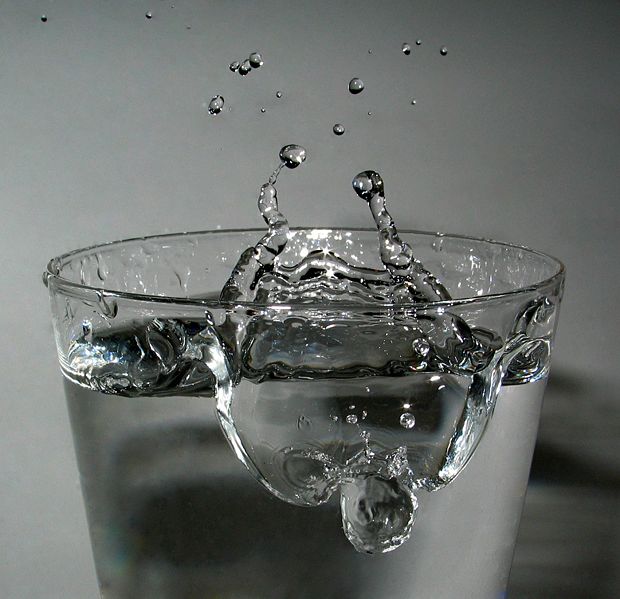Ben - Now Peter, we're going to jump back into the world of Physics for you and this one is about a nano particle. In this case, the wonderful buckyball fullerene and its interactions with nanotubes. What have we got?
Peter - Okay, well if you start at the middle so to speak, something everyone'll be familiar with, a water molecule. This paper is by two theoretical physicists, using computer simulations. So, everything I talk about is done on the computer and not in the lab.
But basically, if you imagine taking a water molecule, placing it inside a  fullerene which is like a mini football 60 carbon atoms forming roughly a sphere. And you can do that in the lab, and that has been done in the lab and lots of other things have been put in in fullerenes as well. And then they put the fullerene containing the water molecule which they call an endohedral fullerene. They put that in a carbon nanotube which as its name implies is, a very small tube made of carbon atoms rolled up a bit like a drinking straw. And then they model what happens if you apply an electric field along the direction of the nanotube and they basically find that the fullerene containing the water molecule moves.
fullerene which is like a mini football 60 carbon atoms forming roughly a sphere. And you can do that in the lab, and that has been done in the lab and lots of other things have been put in in fullerenes as well. And then they put the fullerene containing the water molecule which they call an endohedral fullerene. They put that in a carbon nanotube which as its name implies is, a very small tube made of carbon atoms rolled up a bit like a drinking straw. And then they model what happens if you apply an electric field along the direction of the nanotube and they basically find that the fullerene containing the water molecule moves.
That's a bit mysterious because it's neutral. Water is neutral and the fullerene is neutral so you wouldn't expect it to move if an electric field was applied. Although again, it's not surprising because water is what's known as a polar molecule and that they charge separates and so the oxygen becomes negative - slightly negative and the hydrogen atoms becomes slightly positive. So then it's overall neutral, but it's got a charge distribution so you might expect it to do something in an electric field.
Well, what they found that was really strange was that in their simulations, as they increase the strength of this field, first of all, the fullerenes containing water molecules moved in one direction and then when the field increased above a certain value it started moving in the other direction.
Ben - So, that's just really increasing the actual strength. That's not changing their polarity. We're not using AC alternating current.
Peter - No.
Ben - Literally just a more powerful or stronger electric field.
Peter - That's right, yeah. So basically, what they say is that a water molecule is moving all the time. It's rotating, it's vibrating and they basically argue that the energy that's sort of tied up in these forms of motion becomes converted into motion in a straight line because basically, in the nanotube, it can either go forwards or backwards. There's nowhere else for it to go.
That's their working hypothesis, but they really need to be sort of confirmed in a lab to be useful for anything and that might be fairly tricky because as I say, water molecules and lots of other atoms have been put in. Fullerenes have been put inside nanotubes to make what's known as nano peapods.
But the electric fields you're talking about in these experiments are very high. The voltage at which it changes from moving in one direction against the field to moving with the field. You know, it's something like half a billion volts per meter. All sorts of other things might happen if you applied a voltage like that to a system like this. It's an example, in a way, a very sort of pure research and just thinking what would happen if I take this very well understood system. Nanotubes has made thousands of papers on fullerenes, theres has been thousands of paper on water, countless papers on it. So, it's interesting that there are still new things we can explore in such well-known systems.
Philip - If you're starting to talk about drug delivery, is the idea to then start putting bigger, more complex molecules inside the fullerene with slighlty more complicated charge distributions and see how they behave when you start to apply the field. Is that where that might come in?
Peter - I think you could try and do it with sort of larger and more complicated molecules, but I think that really, really is far off. I think it's more a fundamental problem. Where they're just trying to get the terms with the basic physics and chemistry that are going on in these systems.










Comments
Add a comment